How the Modern Buyer’s Journey Fits into the Sales Cycle

The sales cycle is the process of developing a lead into a closed sale. Sales professionals know this progression well. They know where each of their prospects fall within the cycle. However, there is a reverse side to the sales cycle: the buyer’s journey.
What Sales Professionals Are Missing
The buyer’s journey is obscure to most sales professionals because it happens behind closed doors, within the buyer’s business. As the sales professional works to advance their sales cycle, the customer simultaneously works through a journey of their own. Sales professionals need an understanding of this unseen process because it governs the speed and distance of deals moving through the sales cycle.
Understanding the modern buyer’s journey is difficult because it is a dynamic process. The buyer’s path is not linear. It has twists and turns and traces an ever-changing route. The sales professional must anticipate these movements to stay ahead of the next curve.
Sales professionals who adjust to this twisting path enjoy benefits like “a speedup of as much as 20 percent in the time that elapses between qualifying a lead and closing a deal,” according to research from McKinsey. Here, we look at how sales professionals can incorporate the buyer’s journey into their sales cycle for a more complete approach to the sale.
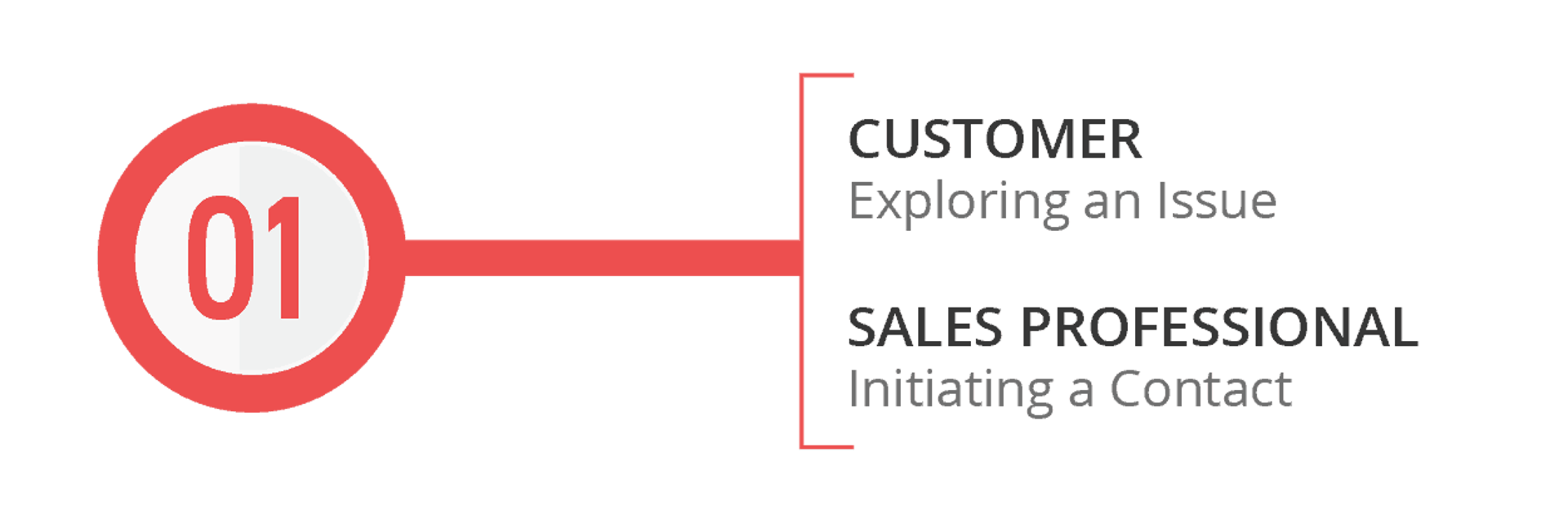
In the earliest stages of the buyer’s journey, the customer is discovering a business challenge or a need for improved performance. They’re asking themselves if the need is significant enough to warrant action. They are defining the issue. Sales professionals who are able to enter the discussion in this early part of the journey are well equipped to effect change. They can validate that viable solutions exist.
Aligning with customers at the start of their journey is difficult because initial customer challenges are not visible from the outside. In some cases, a sales professional can take cues from broad industry issues in their approach to prospecting and leverage them as insights to shape the customer’s thinking. The best sales professionals don’t merely watch for the buyer’s journey to start — they make it start. In doing so, they might connect with a company as the stakeholders are facing a new regulatory, resource, or revenue challenge.
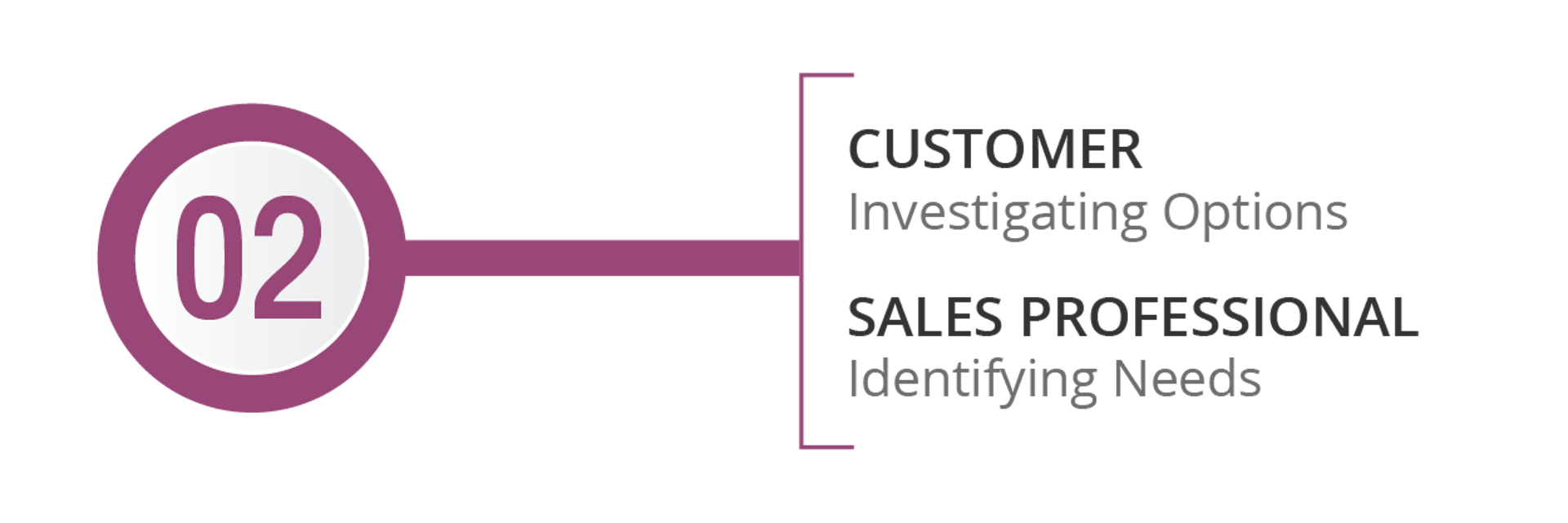
If the customer determines that the challenge is worth pursuing, they will begin to evaluate options. They will define desired outcomes. The customer also clarifies which stakeholders will be involved and how they’ll measure success. Often, they use this information to help draft an RFP and establish a budget.
Sales professionals need to engage customers at this point because stakeholders will decide if they can develop a solution in-house. To earn the sale, it’s critical for sales professionals to begin to demonstrate how they will deliver results that exceed an internal solution. Doing so means getting an accurate read on the customer’s needs. Sales professionals who get in front of customers at this point will be better positioned as stakeholders evaluate partnerships.
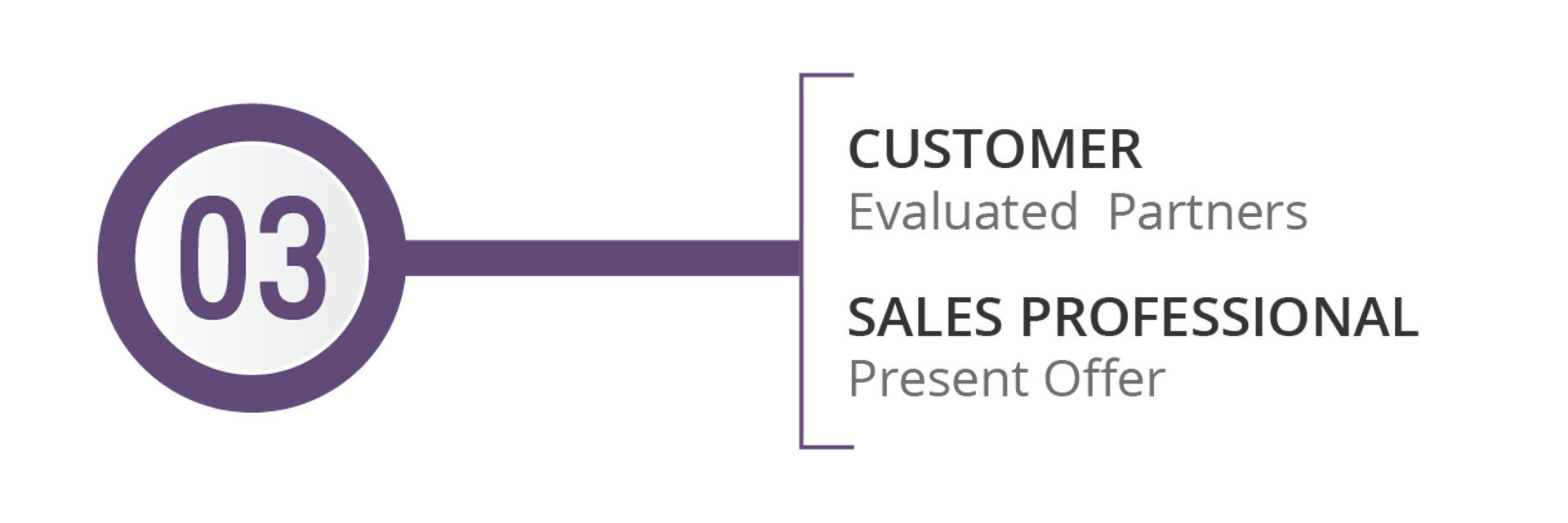
After screening solution providers, the customer engages potential partners in a deeper evaluation. This phase illustrates why the buyer’s journey can take an unexpected turn. For example, at this point, more stakeholders might enter the picture. This development brings more biases and diverging opinions into the mix. As a result, priorities might change along with decision criteria and requirements. ROI enters the discussion.
Sales professionals presenting an offer must become agile and proactive because more stakeholders mean more questions. Sales professionals must be ahead of the next move. Agility shows the customer that if they move forward with the sales professional, they can expect immediate communication, which is a precursor for becoming a trusted advisor. As the customer begins to form relationships with partners, they’re asking themselves, “Is there proof of value?” and, “Who do we trust?”
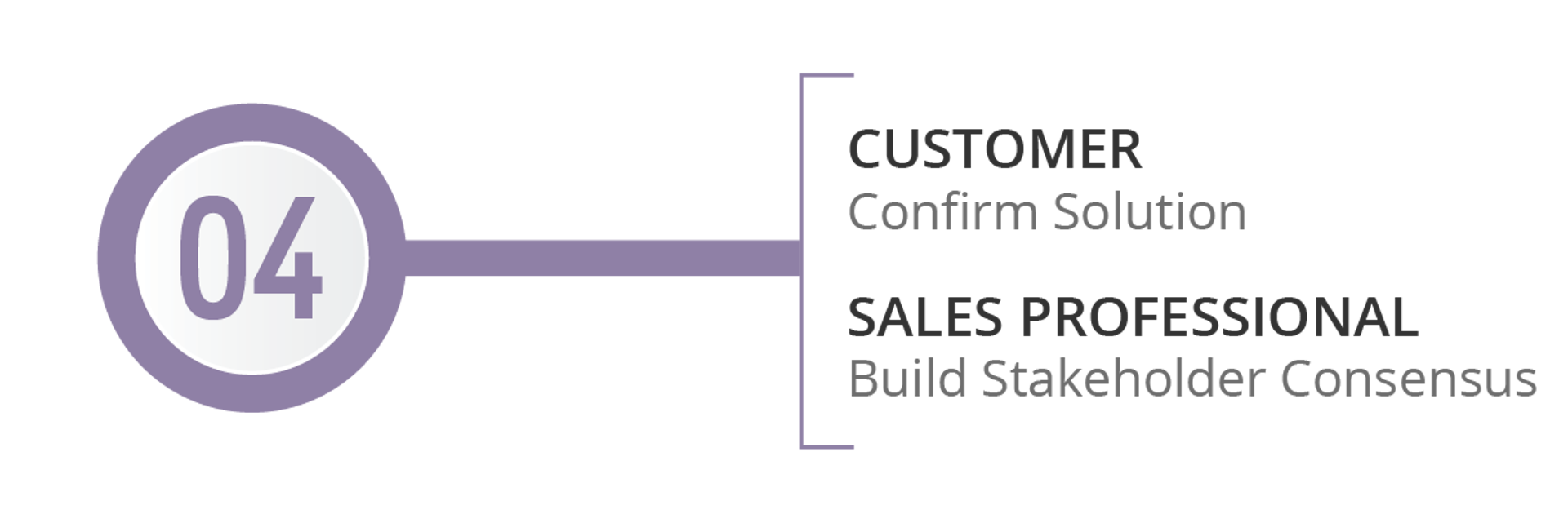
At this point, the customer gets serious about costs. They consider the risk of doing nothing and the risk of choosing the wrong solution. Customers need assurances that implementation will be fast. The customer has spent enough time on the issue to decide if the challenge or goal warrants continued attention. Making this decision requires agreement from all stakeholders, as well as internal alignment.
Part of the sales professional’s job is to create this alignment. Each stakeholder has a different perspective on the solution. Each assigns a different value to the capabilities. Sales professionals can drive the customer’s momentum by articulating the opportunity costs associated with the status quo. Instilling a sense of urgency requires the sales professional to understand the differing motivators driving each decision maker.
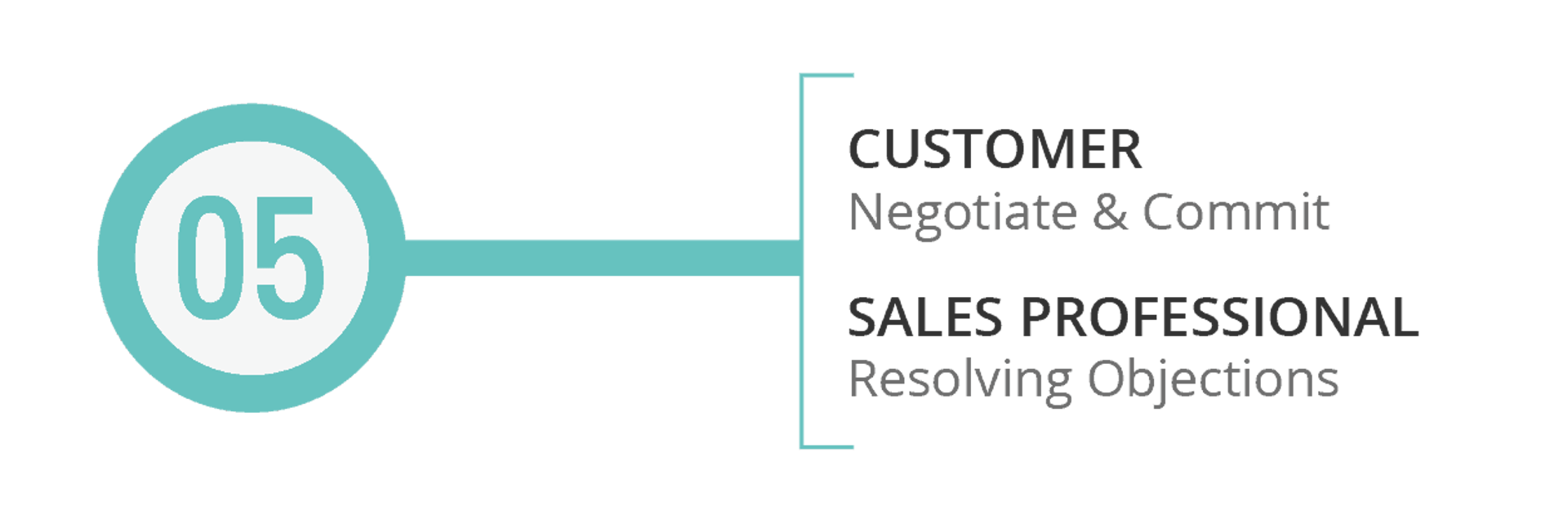
Once the customer decides to move forward with the solution, price and terms enter the discussion. If acceptable, these numbers validate the decision to invest. Customers will use negotiations to defray risks by seeking a lower price to reduce financial exposure. Procurement, finance, and all other stakeholders will compare the implicit and explicit costs associated with the status quo in comparison to those of the solution.
The buyer will consider what they’re willing to trade or concede to get the best value. Sales professionals face off against other sales professionals as customers attempt to triangulate the best possible deal. Meanwhile, sales professionals also face customer objections. The goal is to resolve objections rather than overcome them. Overcoming an objection can result in relinquishing terms to the customer or diminishing the scope of the sale.

The solution must deliver ongoing value. Therefore, implementation doesn’t represent an end; rather, it represents the start of another phase. Customers must be present to adjust, provide ongoing support, and help the customer determine the solution’s real ROI. As business conditions and market drivers change, so do the customer’s needs. The sales professional can deliver on this expectation by defining roles and responsibilities for regular customer support.
Regular customer support also creates opportunities for growing into the customer’s white space. With an established relationship, the sales professional is present when the customer begins to discover new needs. Early involvement means sales professionals can shape customer thinking sooner. Access to stakeholders gives sales professionals an active role in revealing unmet needs.
Knowing the sales cycle is only half of the sales professional’s responsibility. They must know the process that’s unfolding within the walls of the customer’s business. They must understand the buyer’s journey. Doing so means acknowledging and influencing the customer’s internal drivers at each stage of the sale.
To learn more about the modern buyer journey download the complimentary white paper, Embracing the Turns, The New Buyer Journey.

White Paper: Embracing The Turns, The New Buyer Journey
DownloadGet industry insights and stay up to date, subscribe to our newsletter.
Joining our community gives you access to weekly thought leadership to help guide your planning for a training initiative, inform your sales strategy, and most importantly, improve your team's performance.






